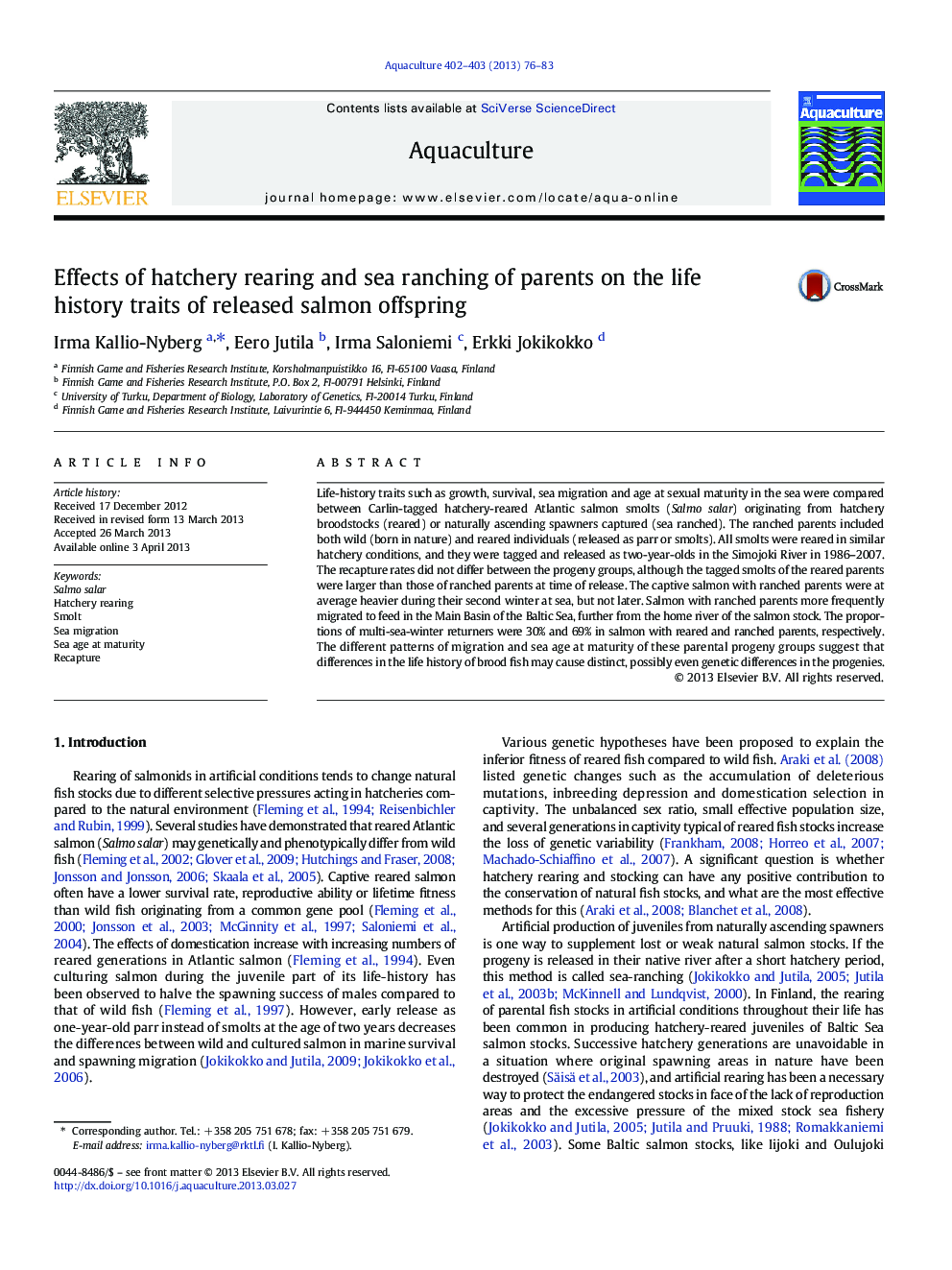| Article ID | Journal | Published Year | Pages | File Type |
|---|---|---|---|---|
| 2422110 | Aquaculture | 2013 | 8 Pages |
•The production methods affect life-history of salmon.•Parental breeding history affected growth, sea migration and sea age at maturation.•The reared progenies with ranched or reared parents are different.•The parental ranched progenies migrated to feed further from the home river and produces relatively less grilses.
Life-history traits such as growth, survival, sea migration and age at sexual maturity in the sea were compared between Carlin-tagged hatchery-reared Atlantic salmon smolts (Salmo salar) originating from hatchery broodstocks (reared) or naturally ascending spawners captured (sea ranched). The ranched parents included both wild (born in nature) and reared individuals (released as parr or smolts). All smolts were reared in similar hatchery conditions, and they were tagged and released as two-year-olds in the Simojoki River in 1986–2007. The recapture rates did not differ between the progeny groups, although the tagged smolts of the reared parents were larger than those of ranched parents at time of release. The captive salmon with ranched parents were at average heavier during their second winter at sea, but not later. Salmon with ranched parents more frequently migrated to feed in the Main Basin of the Baltic Sea, further from the home river of the salmon stock. The proportions of multi-sea-winter returners were 30% and 69% in salmon with reared and ranched parents, respectively. The different patterns of migration and sea age at maturity of these parental progeny groups suggest that differences in the life history of brood fish may cause distinct, possibly even genetic differences in the progenies.
